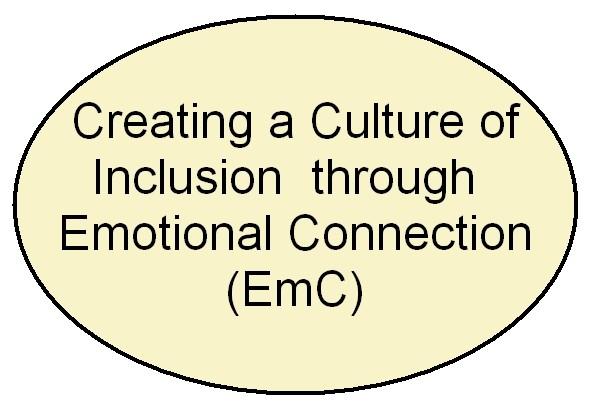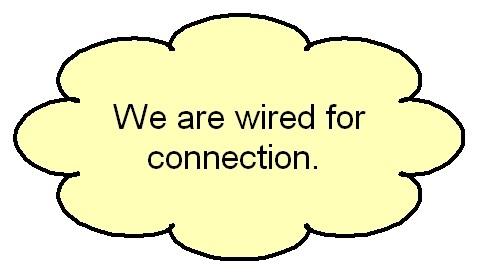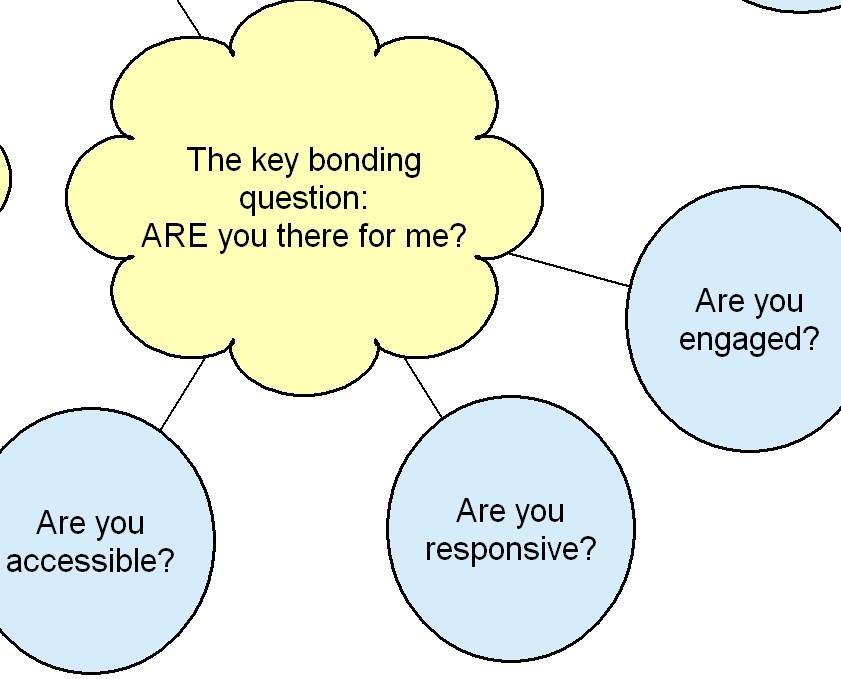
Katie was leading a meeting with her team. When she surfaced a particular topic, one of her newer team members, Jose, chimed in to say he had experience with a similar issue and began to elaborate.
Katie kindly interrupted him and mentioned that in the interest of time, they needed to move on to the next topic.
After the meeting Jose visited Katie in her office to let her know he was feeling bad about the way she treated him in the meeting.
He mentioned he felt cut-off and not valued. Katie listened to Jose for about a minute and quickly apologized. She explained that all she was trying to do was keep the meeting on schedule.
Katie sensed that even after she listened to Jose express his feelings and she apologized, they were still disconnected.
How many times you have been in Jose or Katie’s shoes?
Many of us get triggered, we get stuck and don’t understand what’s going on and what we need to feel better.
The science provides us a road-map. It is rooted some of the key concepts:

When we lose our connection, our emotions start to push us for connection with ineffective strategies such as complaining, blaming, criticizing, judging or defending, distancing and stonewalling. These strategies lead us into a negative cycle of interaction, leaving us feeling more disconnected.
You know that people are disconnected if you have experienced any of the following:
- Have you heard gossip lately?
- Do you notice that there is an internal competition going on where people competing against each other rather working with each other?
- Have you been feeling a bit resentful or angry at work?
- Do you see good employees leaving?
All of these behaviors tell you that people are stuck in a negative cycle. The culture suffers.
How do you change the cycle? How do you change the culture?
The first thing is to understand that when we work together, we depend on each other. This dependency creates an attachment and turns on our bonding needs.
Our brain becomes ultra-sensitive to the cues we send to each other, such as words we say, the facial expression, the eye contact, and the tone of voice.
The amygdala in the brain, becomes like a radar that constantly assesses this connection by asking these questions:
- Are you there for me? Do I matter?
- Let’s do it in Are you there for me? A.R.E.
- Are you accessible to me? Even though you are feeling stressed, can you be accessible to my needs and fears?
- Are you responsive to me? Even though you are stressed, you are upset, can you still be responsive to me? And understand my needs and fears?
- Are you engaged with me? Even though you don’t agree with me, can you still be emotionally engaged with me? To stay present and engaged?

Think about the relationship you have with your colleagues at work or with your leader.
What is your response to the question, “Are they there for you?”
All relationship distress starts when the answer to that question is a “No” or “Maybe”. That is when the brain goes into panic and the emotions come up.
They goal is to learn how to understand your emotions and your emotional needs in time of a disconnect so that you can reconnect and to remain accessible, responsive and engaged.
Let’s take the example of Katie and Jose.
After the meeting, an ARE conversation would sound something like this:
Jose would say, “You know, Katie, I could see how much you really wanted to finish the agenda and I really respect you for taking care of things, being on time and making sure that everything is covered. I want you to know that you did a great job and I am here to support you.”
Katie would feel like Jose really understand her. He understands her worry and concerns. He really gets her world and her fears. That type of response pulls Jose and Katie closer – it creates an emotional connection and nurtures their bond.
This also pulls a different type of a response from Katie – when Katie hears that Jose understands her emotionally, she is now open to understand Jose’s emotional world.
She says, “Jose, I really appreciate you being so understanding. I was so worried and I am sorry that I had to stop you. I did not mean to shut you down, I was just really, really worried and I wanted to make sure we get through the agenda.”
Now, Katie is open to hear Jose’s ideas and feels much more connected with Jose.
When people learn how to be A.R.E., either one can start this type of a bonding conversation
This type of a response repairs disconnects and secures the bond between team members, or between leaders and their direct reports.

Whether you are one year old or thirty years old, fifty years old of 90 years old, your brain is wired for bonding.
Your brain is wired to respond to others and one of the reasons why disconnection is so damaging for people that work together is that it interferes with that social engagement system. It interferes with your ability to bond with other people, and to turn to other and get the source of comfort and support that we all need when we work together.
With EmC, you are focusing on changing the way people deal with their emotions, changing the emotional music in the interaction so that the way people work together changes. They becomes more supportive. People don’t get caught in such negative cycles. They can move out and create positive cycles of care and bonding.
EmC is a 3-stage Process
Stage One is de-escalation, you teach people all about attachment. You help them understand their emotions and their moves that creates a negative cycle. You are helping them understand how disconnected they feel and how the way they deal with their emotions ends up in this dreadful cycle which perpetuates their disconnect.
You align people against the cycle, not each other and you start to identify the steps that gets them stuck in a negative cycle. By the end of Stage One people can say, “Oh, we are getting caught in this dreadful pattern again. Is this one of those times when you feel helpless? Because I know I am getting worried right now.”
Stage One gives you a basic safety. It allows you to put a cap on disconnection and helps people understand what’s going on in their relationship. It is empowering.
Stage Two, you don’t just contain the negative cycle, you start actively create a positive interaction where people can start move closer together, share their concerns in a way that helps people to support each other, talk about their needs and fears, where they can actively create a positive cycle of accessibility and responsiveness.
Stage Three, you integrate the new positive cycle through bonding conversations that maintains and support connection, fueling their creative energy.
People star to being more aware of their emotions. So, instead of just shutting down and staying on the surface and numbing, or getting reactively angry, which are basically the emotional moves that most distressed people make, you are able to talk about what’s going on underneath that, which is that you are desperate when you get angry. You are not actually trying to eviscerate the other person. You are desperately trying to get them to hear you.
Or you are shutting down because you are so confused, you don’t know what to do and you are paralyzed with fear. So you help people share what’s going on underneath the surface that they really often don’t even understand and definitely don’t see in the other person. You help them understand the emotional reality in the relationship a little differently and start to send signals about their softer emotions to each other, because they are going to need to do that.
EmC is a very collaborative process. It is not something that you do to people, you work with people, involving them in processing emotions and creating stronger relationships.
The Emotional Connection process is systematic. It promotes embodiment of entirely new ways of interacting with each other, impacting the culture and creating a sense of bonding and belonging.
This article is taken from LinkedIn.
Photo by Elena Koycheva on Unsplash.

 4.4
4.4 

















